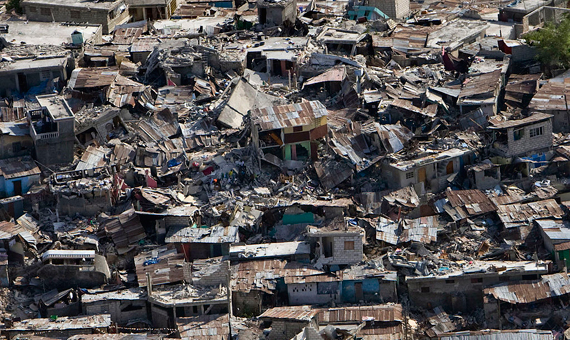On 24 August 2016, an earthquake of magnitude 6 left 281 dead and 388 injured in central Italy. Several towns in the area of the Apennines were shaken and one of them, Amatrice, was virtually destroyed. The images of collapsed buildings and roads riddled with debris formed the picture of a city turned into rubble. Every time one of these disasters occurs, ideas for how we can fight against earthquakes multiply. In addition to the traditional approaches, some research groups are exploring new options focused on the same hypothesis: can cities be protected from earthquakes?

For millennia, protection against earthquakes has put the focus on how to construct buildings strong enough to withstand the shaking. Pliny the Elder already described in the first century A.D. how to include one layer of very well trodden charcoals and another of sheepskin in the foundation of the temples of Ephesus to avoid their collapse in case of a quake. Since then, the technology has moved on to more modern methods including springs, bearings and padded parts. In Tokyo, the city with the greatest earthquake protection on the planet, one finds the latest innovations: the Japanese construct their buildings with materials that absorb the shocks, such as steel, and, in addition, they are clad with dampers (bases of rubber and iron are placed between the columns or between the pillar and the ground). The goal is to have 100% of the buildings and urban infrastructure fitted with anti-seismic measures (seismic retrofitting) by 2020: “Building a city that will not collapse in the event of a major earthquake”. In Spain, a group of researchers at the University of Granada has created some energy dissipating devices that concentrate the damage in case of an earthquake so that the main structure, beams or pillars, remain “elastic”, without damage.
Construct better ground to prevent earthquakes
However, far from these common approaches, other research groups have set a new goal: modifying the ground in order to prevent the quake from reaching cities and buildings. These ideas range from strategically planted trees, to boring holes in key locations, to placing metal rods with specific properties in the ground. One of the most active groups in this new approach is that of the Fresnel Institute in Marseille (France), led by Sébastien Guenneau. His main idea is to control how the ground reacts to the arrival of seismic waves, convinced that the waves themselves can be modified.

To achieve this, Guenneau was inspired by research at King’s College with metamaterials (artificial substances created to have unique properties not found in nature) that allow for an object to be made ‘invisible’ by redirecting the light waves around it, so that the human eye does not detect it. The goal is to do the same, but with seismic waves (as they obey similar rules) and on a large scale.
His first attempt was simply to bore rows of holes in the ground. By mimicking the impact of seismic waves, they found that the vibrations stopped upon reaching the second row. However, while they managed to stop mini-earthquakes, they still had a problem as this system acts as a mirror and bounces the seismic waves back with twice the power. In other words, if this technique were used to protect a hospital, the houses that surround the tremor would suffer twice as much as expected.
His latest research indicates that this problem could be solved by adjusting the space between the rows of holes. In this way, the seismic wave gradually curves away, rather than being reflected. In their tests they managed to “stop” an earthquake of magnitude 3.5.
Resonators to firm up the ground
“Seismic waves that are dangerous for buildings are generally more than 100 metres long. This means that the seismic barrier would need to be several hundred metres wide, or extremely heavy, to be effective. It isn’t practical for protecting buildings in a dense urban area,” declares Chiara Daraio to New Scientist magazine. Daraio, a researcher at the Swiss Federal Institute of Technology in Zurich, has developed another proposal. Based on the same principle, Daraio’s team has designed some cylindrical steel resonators containing vertical bars, also of steel, that sway back and forth when a seismic wave arrives and increase the firmness of the ground, since they are embedded in the soil. Playing with different sizes of resonators, each of which would respond to a certain frequency, the result is that the surface seismic waves would lose energy and be directed downward where they would no longer pose such a serious threat.
These two approaches could be combined by adding one last element: trees. It has been found that the presence of large trees can modify seismic waves, so another proposal is to plant trees around cities to protect them.
Despite how promising these proposals sound, they are still far from becoming reality beyond some very specific projects. They face several problems: soil dynamics are variable even within the same area, the different frequencies that occur in an earthquake (from the epicenter to the aftershocks) and, especially, the fact that they would not be effective for a major earthquake. As recognized by researchers, with a massive earthquake it would be very difficult to maintain the integrity of the resonators proposed by Daraio, and the bore holes envisioned by Guenneau would likely collapse.
Comments on this publication